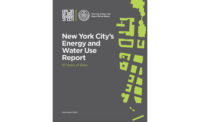Federal contracting officers will no longer be required to withhold 10 percent of fees for architectural and engineering services, following a four-year effort spearheaded by the AIA.
The new rule change—published in March by the Federal Acquisition Regulation Council (FAR), which is made of up the DOD, GSA, and NASA—classifies retainage as discretionary. If contracting officers choose to require retainage, it can be set it at a rate below 10 percent.
The new rule also clarifies that “any amounts retained should not be held over beyond the satisfactory completion of the instant contract.” Previously, retainage could be held until construction completion.
Paul Mendelsohn, vice president of government and community relations at AIA, says that A/E firms had been unfairly singled out under the previous rules, as 10 percent retainage was not required of contractors.
“This is a big win at a time when there is a lot of federal government work coming out, especially for smaller firms that can’t afford to have money held back for months or years,” he says.
AIA was alerted to the issue by Paul Renker, principal of Renker Eich Parks Architects in St. Petersburg, Florida. Renker, a former president of the Tampa Bay Chapter of AIA, learned about the retainage rule in 2006, when his firm was selected to design a new, 166,000-square-foot, $30.5 million Job Corps Center in St. Petersburg for the U.S. Department of Labor.
The firm received its first payment for services 220 days from the start of fee negotiations; however, retainage was held until approximately 500 days after contract notice to proceed.
“In over three decades of practice, I had never seen that,” Renker recalls. “It shocked me to the point where I couldn’t let it go unchallenged.”
Renker says that as a small business, the withheld fees were particularly onerous, as the firm had borrowed money to help pay for project-related expenses. “I had to borrow money, yet the federal government held my fee interest-free,” he adds. His firm has 12 employees at the time and is now down to nine.
Renker brought the retainage issue to AIA staff, who in turn caught the attention of the Small Business Administration (SBA), an independent agency of the federal government. In 2008, the SBA identified the rule as one of its top 10 regulations for suggested reform.
Renker testified before the House Small Business Committee in 2008 that the retainage rule was a “strong deterrent for small firms,” arguing that it was counter to the Brooks Act, which establishes qualification-based selection process for A/E firms. “There are common methods of determining whether performance of A/E services has been satisfactory long before payment for services or completion of construction,” he testified.
The American Council of Engineering Companies and the National Society of Professional Engineers also backed the AIA initiative to change the rule.
Congress did not need to act on the rule change; rather, the SBA worked directly with FAR. A proposed rule was posted on May 5, 2009, with a two-month comment period. The final version was published March 19, 2010, and took effect April 19. Mendelsohn said that the process of getting the rule changed was “lightning fast” by Washington standards.
Although Renker’s firm doesn’t pursue much federal work, he says its rewarding to see all small A/E firms see positive change on Capitol Hill. “It’s satisfying to know that the system sometimes works,” he adds.





Post a comment to this article
Report Abusive Comment